Famed stickwork sculptor, Patrick Dougherty has created countless landscape structures all over the world. This is what happened when I joined in to help him create a sculptural landscape art installation at the New England Botanic Garden.
…
We are all on a journey. But for the last few years, I wasn’t so sure anymore where my destination was. In truth, I’m not sure if any destination I ever thought I had was even realistic. I’ve reached many of my life goals. But when I look back at them, I have found the true joy always seemed to come from something other than the check mark.
Big goals, big things, enduring impact are what I’ve been thinking about my whole life. I’ve always reached way beyond my capacity and skills.
Be an astronaut.
Be the first woman/human on Mars.
Make six figures (and more than my husband, as a woman, in 1997, in tech).
Travel a lot. See and experience the whole wide world.
Change the actual culture of the USA (to be more environmentally appreciative).
And then, change the voice of garden media (to be more inclusive, likable and captivating).
I’ve fallen short of many of them, and as I self examine, I think two things: Wow, that is some sort of random list. And also, why so big? Outrageous, and nebulous? And so obviously, and constantly headed towards burnout.
Which is exactly what keeps happening. Burnout.
With these thoughts I wondered if I could learn something from an artist (particularly Patrick Dougherty) who makes giant swirls of structure from twigs? Someone who creates huge things, in short time frames, and then picks up and does it all again somewhere else.
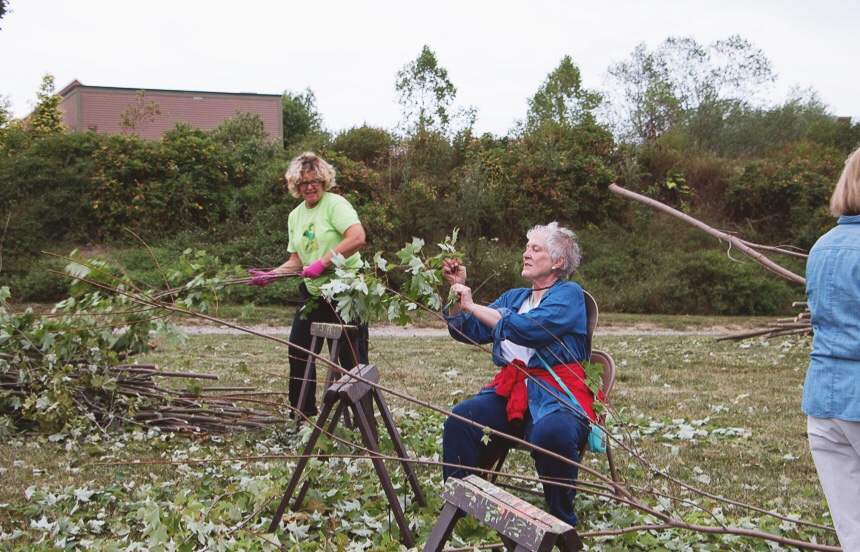
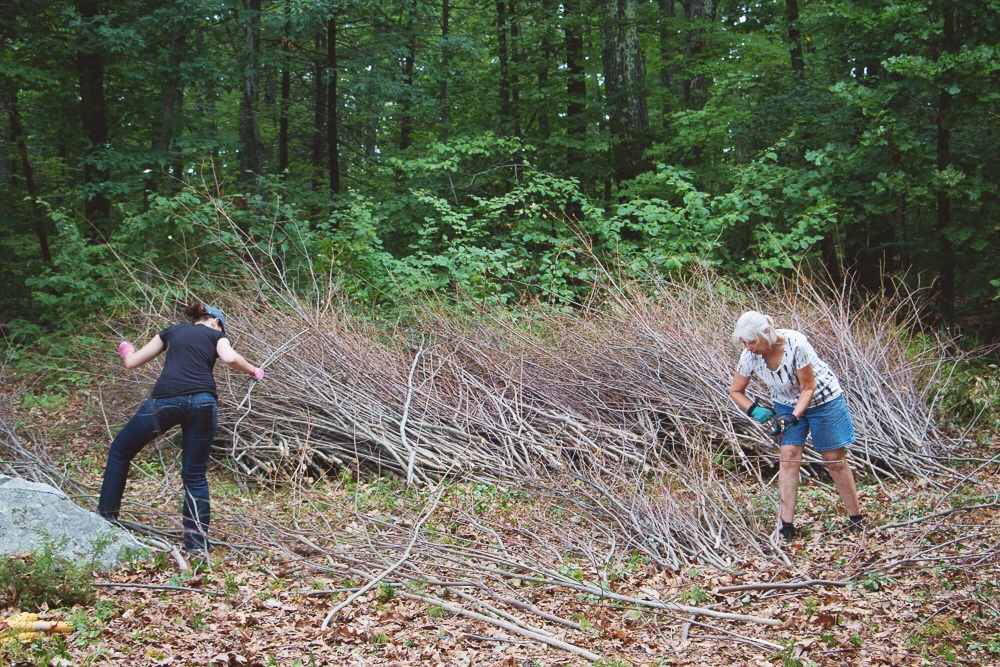
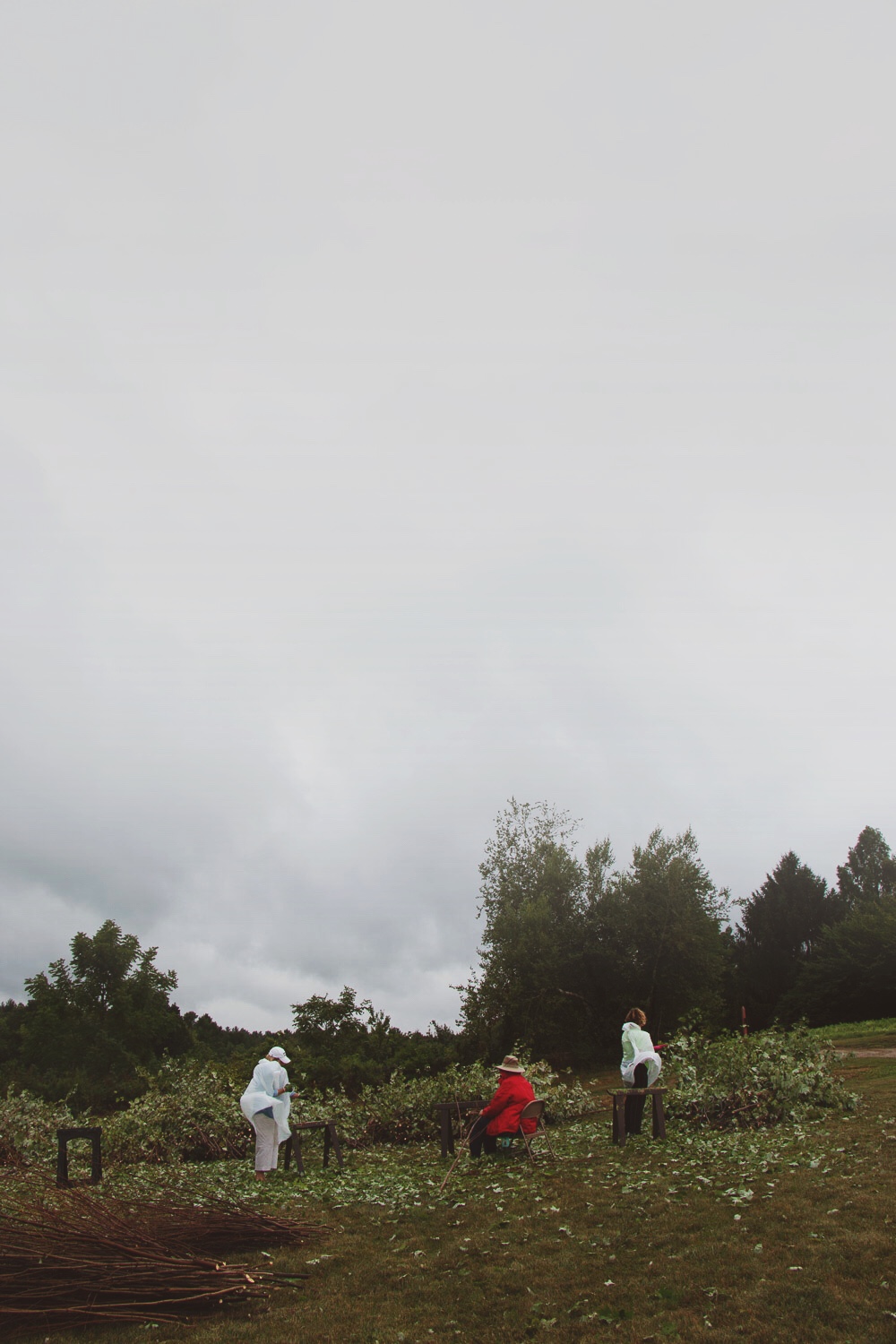
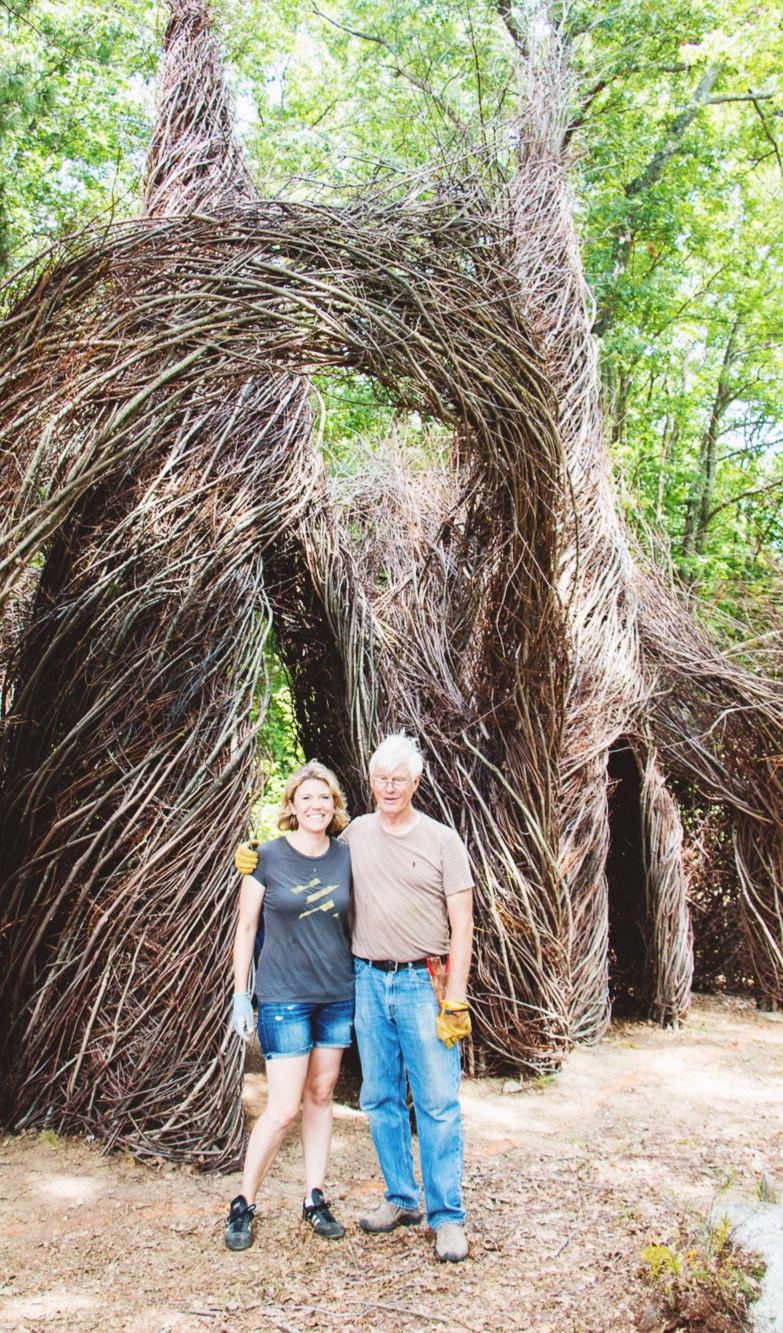
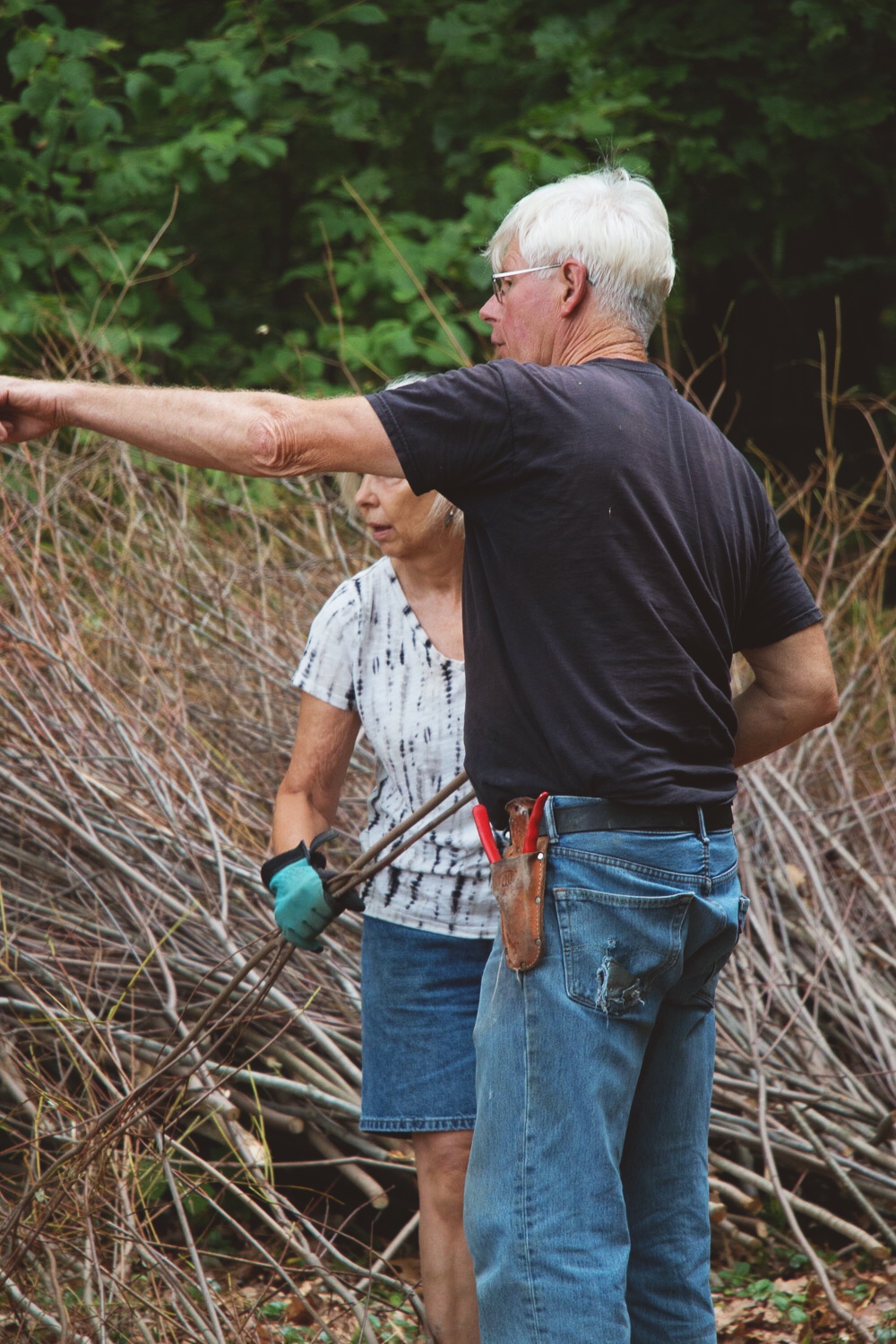
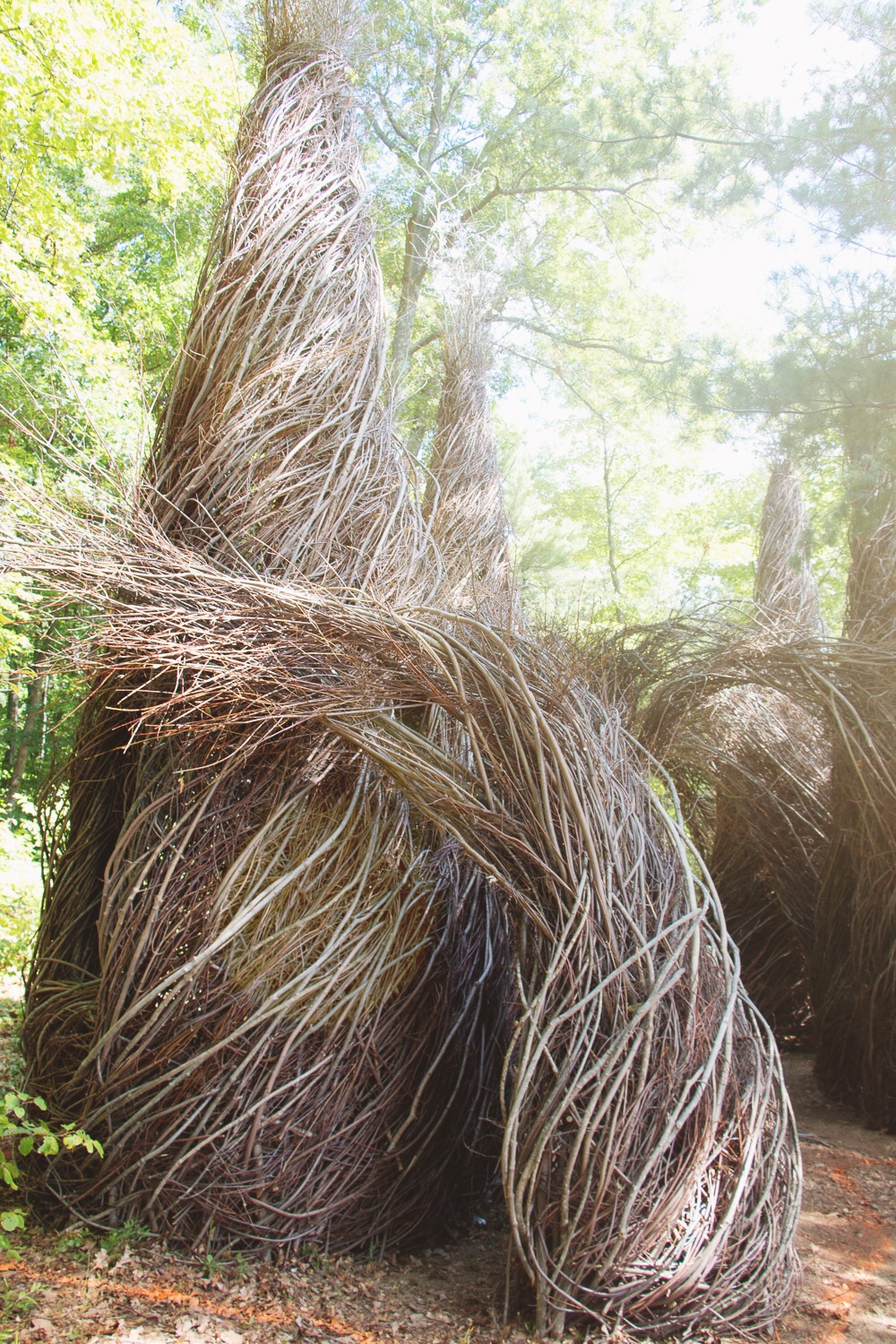
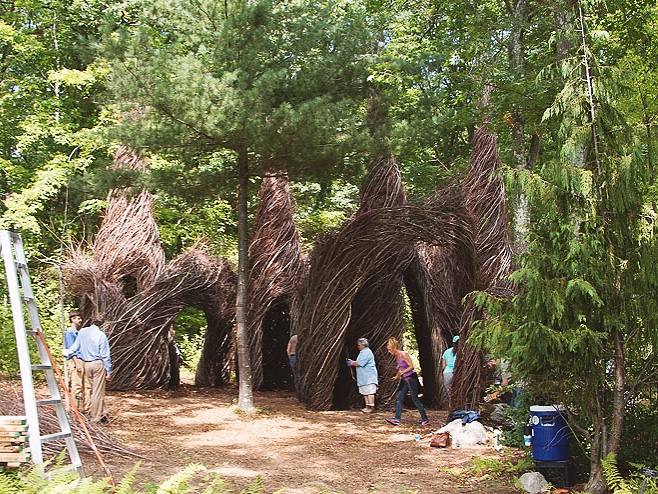
Helping Patrick Dougherty Build a landscape sculpture at New England Botanic Garden – Day 1
Patrick Dougherty’s work is easily recognizable; each installation and landscape sculpture becomes an instant landmark.
But being an artist is a second career, and he once worked as a healthcare administrator. I imagine he had the same struggles I did when I once sat in cubicle land. Any title with ‘administrator’ in it, seems as far as you can get from spinning branches into sculptural gold.
In the fall of 2016, Patrick was commissioned to build what is now known as The Wild Rumpus at Tower Hill Botanic Garden (now called the New England Botanic Garden) in Boylston, MA.
I volunteered to help.
More than wanting to learn to twist sticks, I wanted to be part of an artist’s life. I wanted to soak in whatever wisdom that could come from hanging around someone who seemed to evolve in the same way I want to. I saw parallels in the art and artist to my own path.
On my first day, I stood for hours in a field surrounded by huge piles of branches. The mixed saplings had been harvested off the land of the nearby Wachusett Reservoir conserve.
I was among a group of women, most were my mother’s generation or older and I suspect they weren’t taking time off work, as I was. I’m not sure they were seeking as much as I was from the experience either. We were charged with stripping leaves and sorting by size. It was a daunting job that seemed like it would never end. Deliveries from the cutting team kept the piles growing faster than we, the stripping team, could shrink them.
We worked in the rain. I wondered what on earth I was thinking to sign up for such a wretched boring, miserable task. The only bright spots were a few moments of camaraderie. We decided we needed t-shirts that said “I stripped for Tower Hill”, but mostly we worked in solitude.
When I left, I felt sure that the daunting project would never finish. I worried Tower Hill would have to host a depressing bonfire to burn the sticks that never became anything.
It was dispiriting and I didn’t want to come back for the rest of my volunteer shifts. I couldn’t bear the familiar overwhelm.
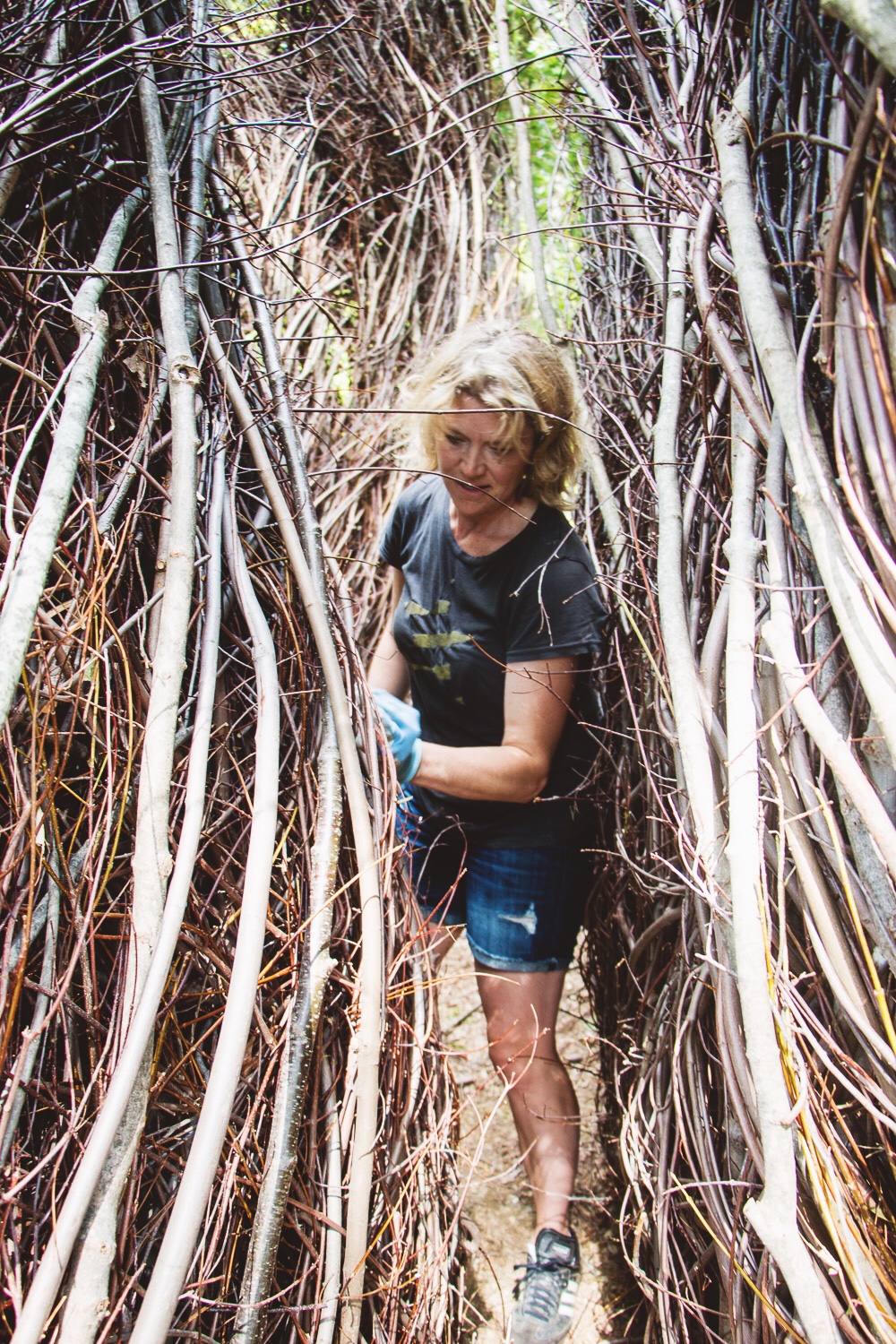
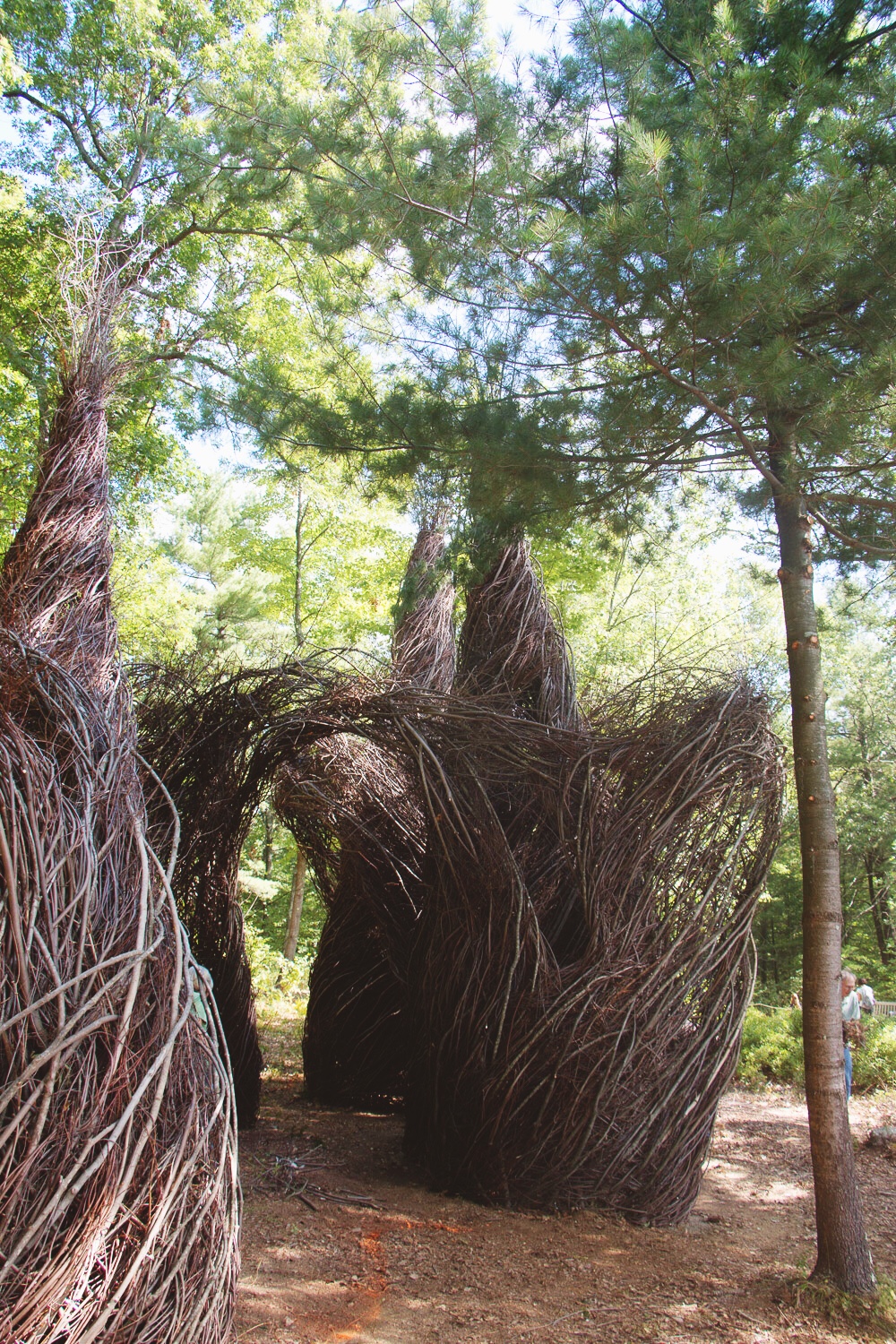
But I did return. I often shame myself with the word “quitter”.
Day two of the stickworks build
My morbid sense of curiosity about how many unstripped branches remained also got the best of me. Plus, I hadn’t even met the artist yet.
As I prepared for day two, I wondered:
Will this be as awful as the last? How does a creative person galvanize a new army of volunteers for crappy jobs nearly every month? And what kind of person must you be to inspire such dedication? To do such hard and mindless work? Is he pretentious? Or unpleasantly driven? Where do the ideas come from? Is there a plan? Will I get to see it?
But I mostly hoped it wouldn’t be so demoralizing.
Day two was blessedly different. I arrived at a very different scene. The basic form of the structure had begun to take shape and there was a whole crew of different people working. There were still two teams, but I quickly maneuvered away from the dreaded stick stripping (the piles were still huge!) and instead towards the construction group. I was encouraged when Patrick, who was absolutely lovely, normal, and not a pretentious artist, praised my physical strength for the job. I found the change motivating, and suddenly, day three seemed doable.
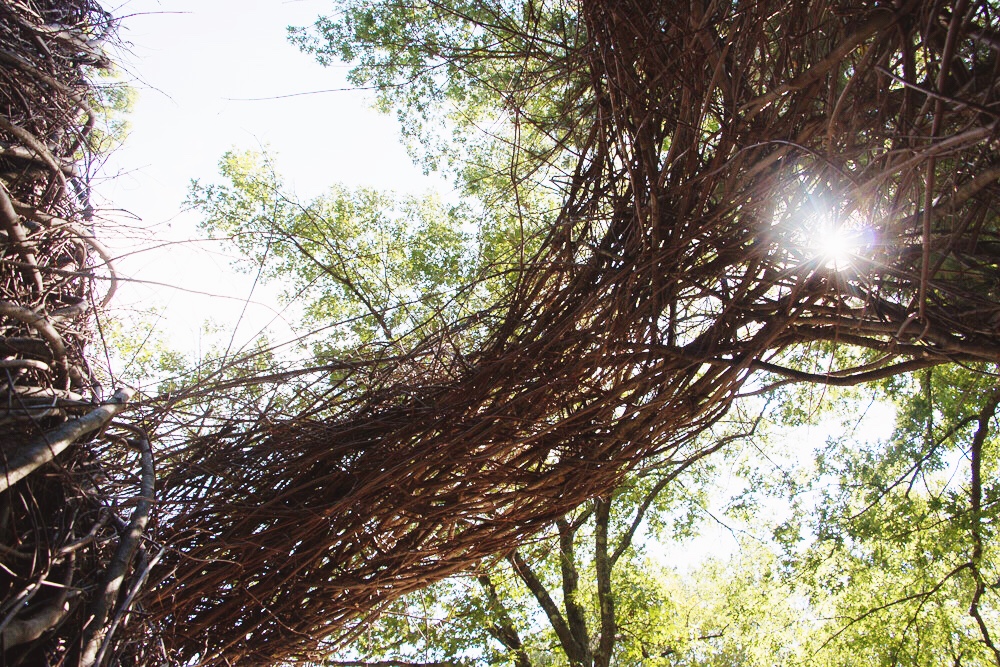
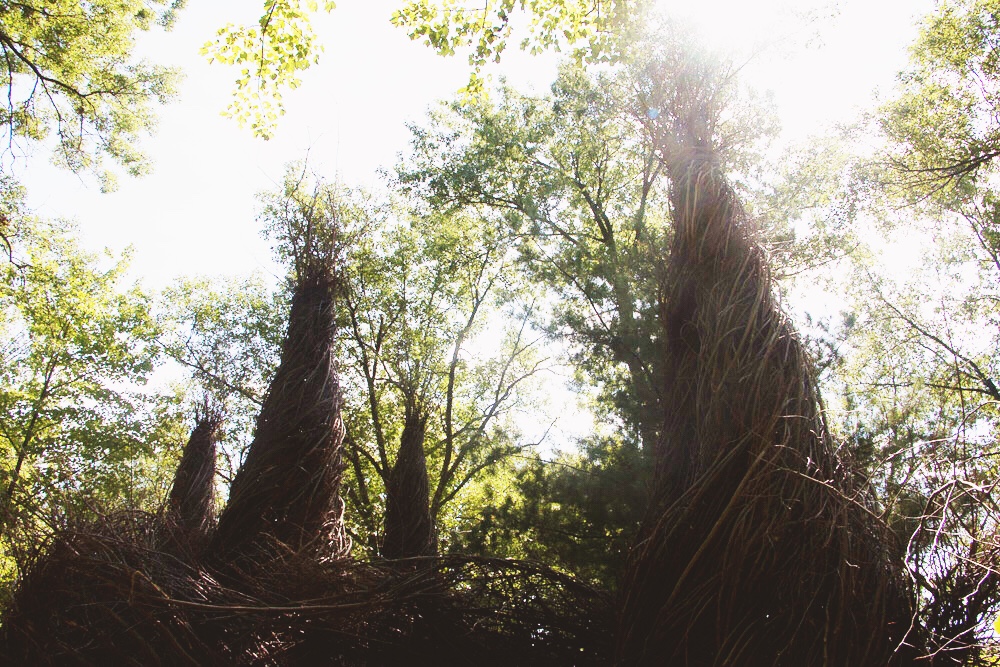
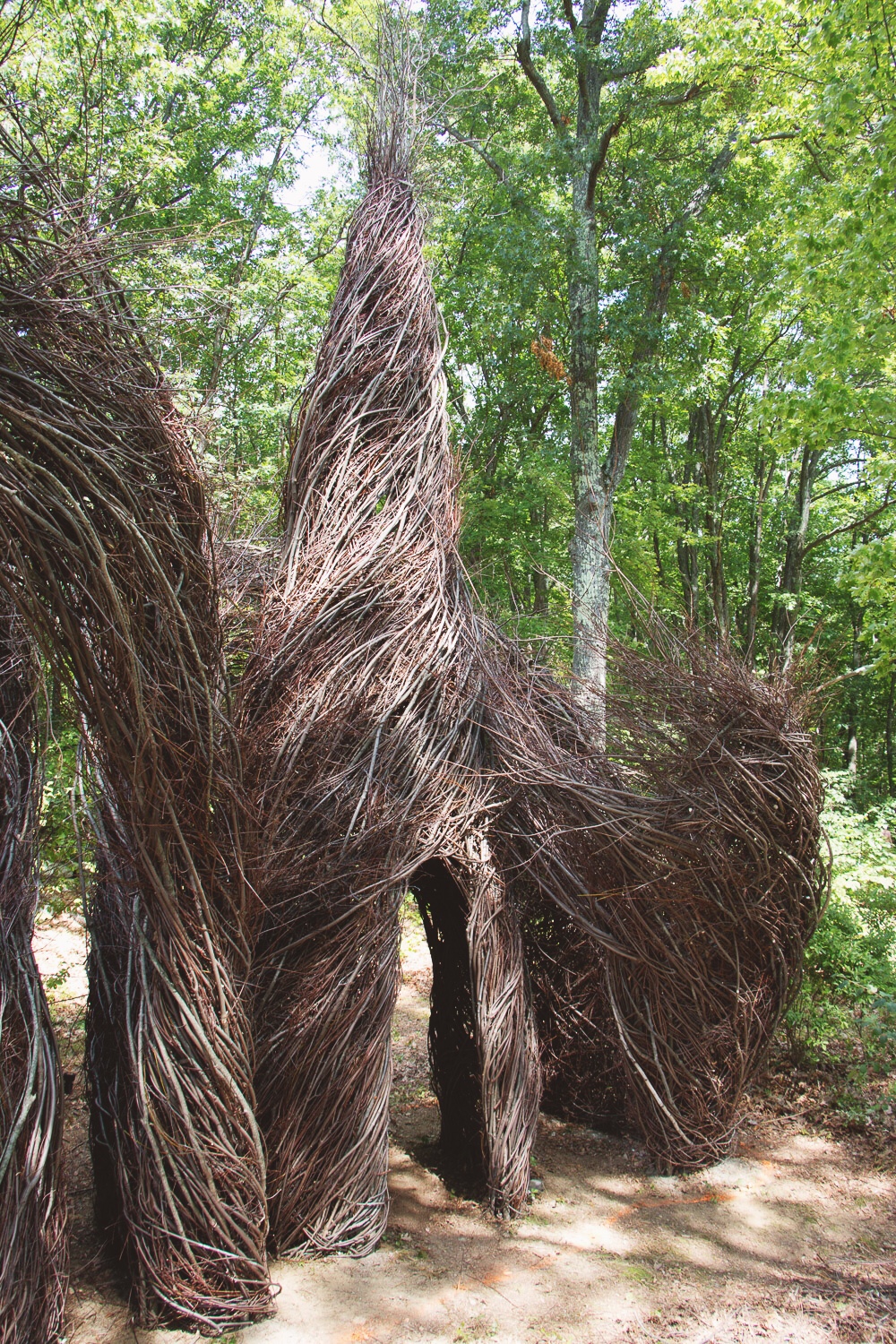
My final day was the last day of construction, and the gala unveiling was less than twenty-four hours away. No longer were there two separate teams. Just one team was pushing hard toward the finish line. I continued to weave branches through other branches as I had been taught on day two. But now we were refining and finishing. I wasn’t sure how we would know when to stop – until Patrick just suddenly determined we were finished. It amazed me that it all happened in such a short time.
I had a few opportunities to chat with Patrick while we worked. I was oddly comforted by his lack of a plan. He sort of creates as he goes. He has a loose idea of what will be, but he mostly figures it out as he goes. I love to work the same way. I have the utmost appreciation for creatives with detailed plans, but I struggle to work that way. It is empowering to see someone with your own process find success.
I also loved that Patrick’s son was his main assistant. Why create a unique life if not to include and share with your loved ones?
I marveled at the magical nature of this project. It took just over three weeks to complete, which, in hindsight, is only a blip of time. I wondered if my initial restlessness was an indication of unpracticed patience. Just like a first jog seems impossible, but with conditioning, you can run a marathon.
I came away with other thoughts too.
Artists are just like me (and most other people I know), and I can give myself permission to be one. They aren’t actually magical (not that I believed that), but they can create magic with practice.
Dedicated sprints of effort, without a myriad of other distractions, seem like a new way of living. Perhaps it is the secret to enduring vigor?
The ephemeral is captivating. At first, I thought, sheesh, all that time and work for something that will only last a few years? And in the end, I think YES! Absolutely. Of course ,all that for something fleeting. Things that come and go are often more cherished and appreciated than what endures.
I didn’t ask Patrick about burnout as I originally thought I might. Even though I suspect he might occasionally suffer from it as well, I’m not sure I’d have felt satisfied with any answer he could have offered. Through his example, I’d witnessed enough clues to how to proceed down my own path.
Patrick Doughtery creates more than monumental swirls of beautiful sticks. He needs the land to give materials, and his works reflect and honor their source. He needs an army of people to harvest, strip leaves, bend sticks, and fill in holes. In marshaling, he creates a community and and pulls together much more than just a piece of art. And in constantly leaving a project and moving on to the next, a remarkable career is assembled (a month at a time).












